#1 in Vietnam
Phở: Basic Information
Pronunciation
Alternative Name(s)
Dish Type
Course
Mealtime
Popular Phở Variations

Phở Bò (Beef Pho)

Phở Chay (Vegetarian Pho)

Phở Hải Sản (Seafood Pho)

Phở Bắc
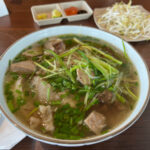
Phở Nam
More About Phở Dishes
Phở: Ingredients and Preparation
Main Ingredients
Main Cooking Method
Preparation Process
- Prepare the ingredients
- Simmer broth
- Cook rice noodles
- Assemble foods in a bowl
Phở: A Deep Dive
Cultural Significance
Taste
Texture
Aroma
Color
Serving Style
Serving Temperature
Accompaniment
- Garnishes: Bean sprouts, basil, culantro, cilantro, onions, green onions, chili peppers
- Accompaniments and Add-ons: Hoisin sauce, sriracha, pickled garlic, lime wedges
Occasions
Seasons
Special Diets
Calories
Popularity
- United States (Especially in areas with large Vietnamese communities)
- Canada
- Australia
- France
- And other countries with a Vietnamese diaspora
Popular Similar Dishes
- Ramen
- Bún Bò Huế
- Soto Ayam
- Kuy Teav
- Taiwanese Beef noodle soup
- Caldo de Res
- Laksa
Popular Dining Area
Phở, or Pho, is a Vietnamese soup consisting of broth, rice noodles (bánh phở), and meat, primarily made with beef (phở bò) or chicken (phở gà). This dish is a staple in Vietnam and can be found in households, street stalls, and restaurants throughout the country. Pho is so integral to Vietnamese culture that it’s often considered the national dish of Vietnam.
There are distinct styles of phở, notably the Hanoi (northern) and Saigon (southern) versions. These styles differ in aspects like noodle width, broth sweetness, and choice of herbs and sauce.
Let’s uncover the history and origins of Phở, chart its rise to global popularity, and break down its key ingredients. You can also explore its diverse variations, weigh its pros and cons, and find out places to taste authentic Phở. Also, delve into frequently asked questions and other similar delicacies.
Key Points
Phở Images
Where Did Phở Originate?
Phở is believed to have originated in the early 20th century (between 1900 and 1907) in Northern Vietnam, specifically in Nam Định Province, southeast of Hanoi. The Vân Cù and Dao Cù villages in Đông Xuân commune, Nam Trực District, are traditionally considered its birthplace.
The name “Phở” is believed to have been derived from the French dish “pot-au-feu,” a type of beef stew. Additionally, Phở’s origins in Northern Vietnam were influenced by Chinese cuisine, especially from Yunnan and Guangdong. The southern version of Phở typically features a sweeter broth and a wider variety of herbs and accompaniments.
While Phở began its culinary journey in Northern Vietnam, it has not only traveled from north to south but, in the era of globalization, has found its way to dinner tables across the globe.
How Was Phở Globalized?
The globalization of phở can be attributed to several factors:
- Vietnamese Diaspora: After the Vietnam War, many Vietnamese refugees settled in various parts of the world, particularly in the United States, Australia, and France. They brought their culinary traditions with them, leading to the opening of Vietnamese restaurants and introducing phở to a global audience.
- Travel and Tourism: As Vietnam became a popular travel destination, many tourists got introduced to phở and its unique flavors. Many returned to their home countries with a love for the dish, further popularizing it.
- Cultural Exchange: With globalization, there has been a significant exchange of cultures and cuisines. The global trend towards trying diverse foods and the health benefits associated with Vietnamese cuisine further propelled phở’s popularity.
- Culinary Innovation: Around the world, chefs frequently reinvent traditional dishes, merging ingredients from diverse cuisines. Phở, for instance, has been transformed into variations like Phở-flavored tacos, burgers, and pizzas.
What Ingredients Go Into Phở?

Below is the detailed breakdown of ingredients and options for a traditional pho dish, categorizing them into broth, noodles, meat, garnishes, and accompaniments/add-ons:
| Ingredients | Description |
|---|---|
| Broth | Bones, oxtail, star anise, charred onion, charred ginger, cardamom, coriander seed, fennel seed, cinnamon, clove |
| Noodles | Flat, thin rice noodles called “bánh phở” 2 types: the fresh “bánh phở tươi” or “kuay tiao,” and the dried one. Their width varies regionally in Vietnam |
| Meat | Options include beef (often thinly sliced), chicken, or even seafood in some modern versions |
| Garnishes | Bean sprouts, basil, culantro, cilantro, onions, green onions, chili peppers |
| Accompaniments and Add-ons | Hoisin sauce, sriracha, pickled garlic, lime wedges |
In this traditional pho dish breakdown, while the flavorful broth and various garnishes play a pivotal role, the central choice between meat types significantly determines the dish’s profile.
What Kinds of Meat Are Used in Phở Bò?
There are various types of meats commonly used in Phở Bò, here are the types of meats and a brief description for each:
| Beef | Description |
|---|---|
| Tái băm | Beef patty from freshly chopped rare beef |
| Tái | Beef cooked to medium rare |
| Tái sống | Rare meat |
| Tái lăn | Beef lightly sauteed before being added to the broth |
| Tái nạm | Medium rare beef combined with a side of flank |
| Tái chín | Combo of medium rare beef and fully cooked beef; standard in many pho places |
| Nạm | Slice from the beef flank |
| Nạm gầu | The brisket cut |
| Gân | Beef tendon |
| Sách | The inner lining of a cow’s stomach, or beef tripe |
| Tiết | Cubes made from solidified beef blood |
| Bò viên | Balls made of beef meat |
Just as the options for Phở Bò are diverse, the chicken version, Phở Gà, offers an equally varied selection of ingredients and preparations.
What Types of Meat Are Used to Make Phở Gà?
Uncover details about different types of chicken meat and parts used in Phở Gà:
| Chicken | Description |
|---|---|
| Gà đùi | The thigh portion of the chicken |
| Gà lườn | The chest or frontal part of the chicken |
| Lòng gà | Internal organs of the chicken |
| Trứng non | Eggs from young chickens or undeveloped eggs |
What Are the Different Variations of Phở?
Besides the two main types, beef, and chicken, vegan pho and seafood pho are widely savored.
Within these variations of Phở, there are multiple regional styles and cooking variations.
What Are the Regional Variations of Phở?
Phở boasts regional distinctions such as:
How Does Phở Vary in Other Provinces?
Across the country, you’ll encounter different flavors and styles, each unique to its region:

Phở Chua (Sour Pho)
A tangy version of the classic pho, seasoned with souring agents for a unique, puckering flavor.

Phở Khô Gia Lai
A regional pho dish where dry pho noodles are served separately from a rich broth.
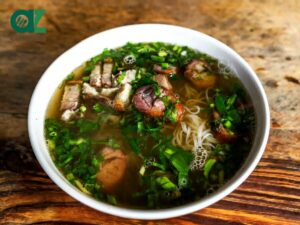
Phở Vịt (Duck Pho)
A traditional pho noodle soup featuring tender duck meat as its main protein.

Phở Gan Cháy
A pho version with grilled liver pieces, offering a smoky and meaty depth.
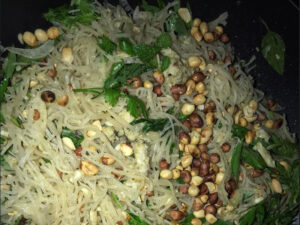
Phở Sắn
A unique pho variant that incorporates root vegetables or tubers

Phở Sa Tế
A version of pho noodles drenched in a spicy chili and creamy peanut sauce for a rich, bold taste introduced by Teochew migrants in Vietnam’s south.
In short, each variety of pho dishes from different regions showcases the creativity of Vietnamese cuisine through different cooking methods.
How Do Different Cooking Methods Create Variations in Phở?
Explore the diverse variations of Phở that have emerged through varied cooking techniques:
With every regional and cooking variation, Phở offers a unique set of pros and cons to the dining experience.
Pros and Cons of Eating Phở
Below are the pros and cons of Phở:
Pros
Cons
Given its taste and nutritional advantages, despite some preparation challenges, it’s worth finding a place to try pho.
Where to Try Authentic Phở?
Next, let’s explore the top destinations where you can try authentic Phở:
In Hanoi
Phở Bát Đàn: A classic spot for phở lovers.
Phở Thìn Bờ Hồ, Phở Thìn Lò Đúc: Not just popular in Vietnam, Phở Thìn Lò Đúc even boasts branches in Japan, Australia, and the United States.
Phở 10 Lý Quốc Sư: Given a nod by the BBC in 2016 as one of Vietnam’s best.
In Saigon (Ho Chi Minh City)
Pasteur Street: The go-to place for beef phở aficionados.
Hiền Vương Street: Best known for its Phở Gà.
Phở Bình: A location steeped in history.
Phở Hùng, Phở Hòa Pasteur, and Phở 2000: Notable mentions with the latter even hosting U.S. President Bill Clinton in 2000.
In the U.S.
Phở Hòa: The U.S. claims the largest chain with more than 70 locations across seven countries.
Pho 75: For those in Washington, D.C., or Philadelphia, Pho 75 is a must-visit.
For those eager to explore the rich tapestry of phở establishments, this list provides a starting point. Let’s dive into further insights available in the next FAQs.



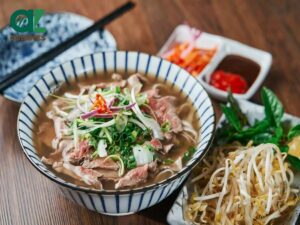










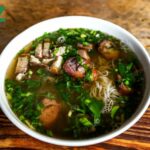
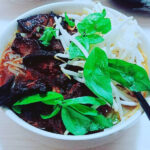


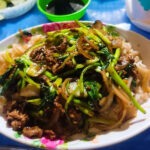



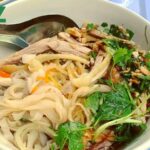
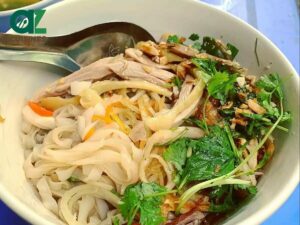


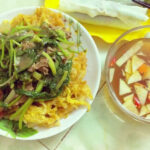

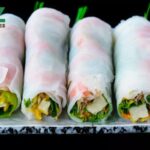




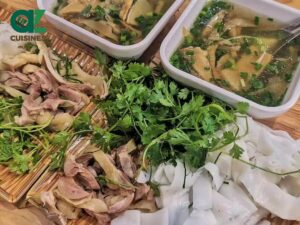













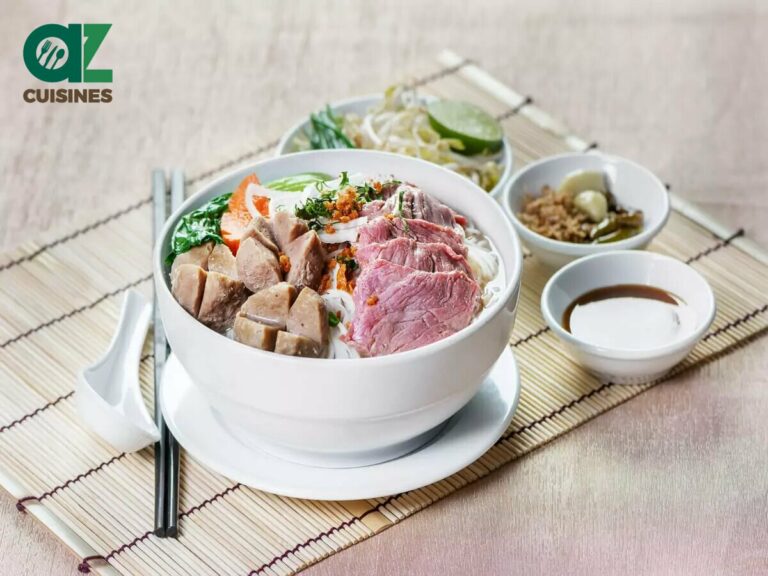






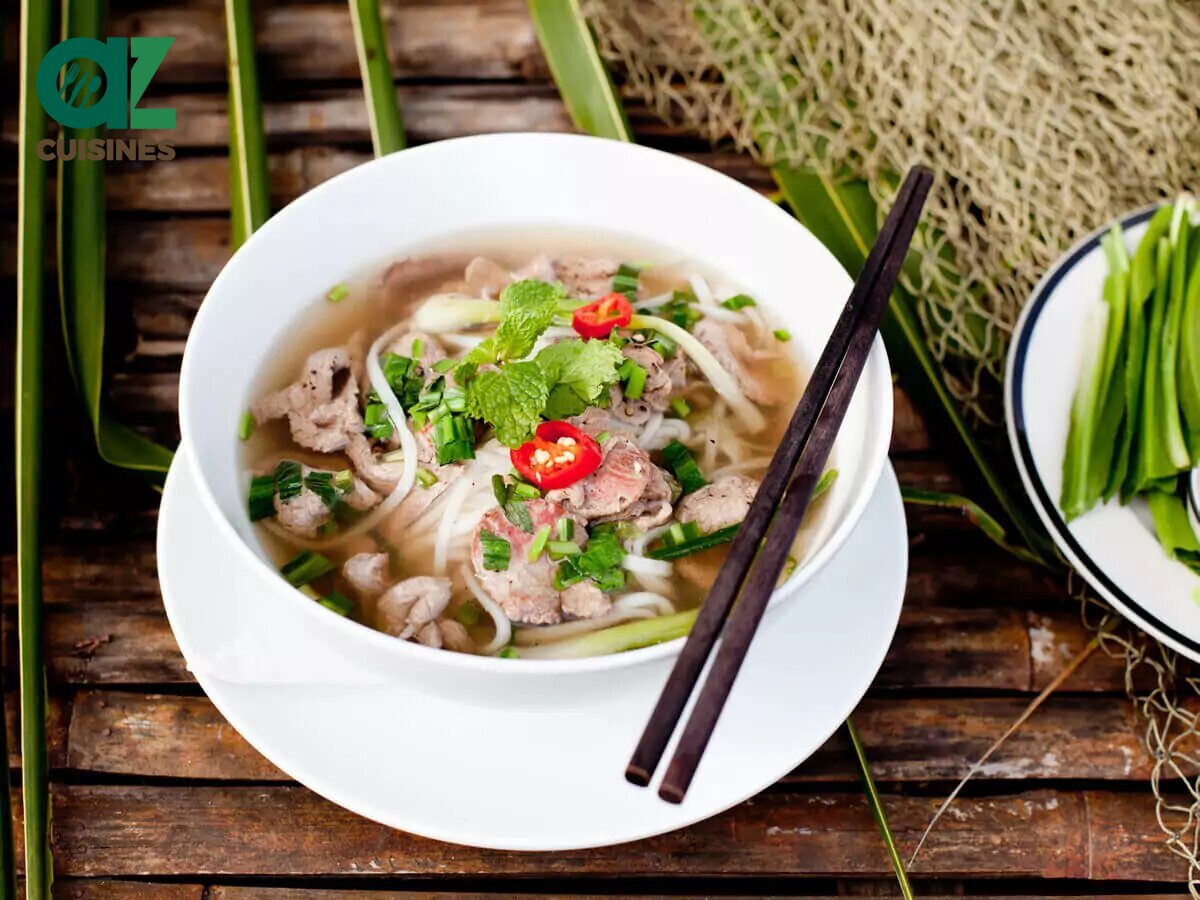





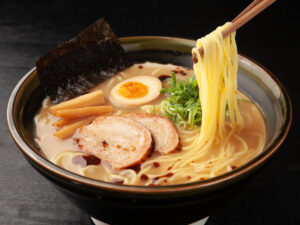

Truc Tran (Kris)
Senior Food Editor
Expertise
Home Cooking, Meal Planning, Recipe Development, Baking and Pastry, Food Editor, Cooking-video Maker, Vietnamese Food Evaluation Expert
Education
Truc Tran (Kris), an experienced food writer and editor, is great at exploring and describing global cuisines, from simple street food to fancy dining. In her writing, she skillfully mixes different flavors, cooking methods, and culinary traditions, showing the unique character of various cultures through their food and drinks. On azcuisines.com, Kris highlights her knowledge, especially in Asian cuisine and worldwide traditional dishes.